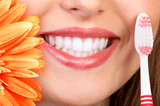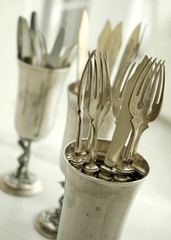Are essential oils better than fragrance oils? And why?
What is an essential oil versus a fragrance oil – why does it matter?
My first introduction into using fragrance oils commercially was back when we were making candles. I love fragrance! And I absolutely loved smelling my candles. Then along came essential oils. The first batch I purchased smelled (I thought at the time) pretty awful – I mean compared to my spiced apple and antique lilac! I purchased them because I had learned that essential oils have medicinal value that can’t be denied. I’ve learned since then that essential oils smell so much better once you’ve gotten off the “fragrance oil addiction wagon”. There is a difference. Other than the fact one causes me to have headaches and the other helps me relax, heals wounds, and helps me have a good night’s sleep.
So, why is there a debate about which is better than the other? Synthetic fragrances used to be cheaper. Not necessarily the case anymore as many of the “synthetic” fragrances also contain essential oils and the price of many essential oils has gone up drastically. Synthetic fragrances always smell consistent – at least from one brand or supplier to the next. Essential oils can vary from batch to batch depending on something as varying as the weather at the time they were grown, not to mention the differences in how they are distilled. Although I read somewhere that there are anywhere from 2000 to 5000 raw fragrance components used to formula fragrance oils.
So what's with the phthalates?
Then there are the phthalates. I won’t go into details here – just google it
and someday I will blog about it, but in our opinion phthalates are to be
avoided. Have we always done that? Well, no. We had to learn better. To my
delight, it is now possible to source fragrance oils that still smell good and
ARE phthalate free. They still give me a headache though. I can use them in our
soaps without problems – and I don’t say that just so you’ll think our using
fragrance oils in our soaps is okay. It’s actually the other way around. I had
pretty much ditched our fragrance oils and they were locked up in a closed
cabinet in a closed bedroom until I could figure out how to dispose of them,
but upon request from a customer made a batch of lilac soap. It smelled
heavenly, I could even use it on my face and it didn’t cause my eyes to water
or my head to ache. We’ve since tried different fragrances in our soaps to see
if we have the same results. Bottom line
though, the essential oils, although expensive, serve many purposes and do not
cause my immune system to go into high alert because something foreign is
coming into my air space. And again though, saying that, our magnolia soap is one of my most favorite soaps to use, especially
if I want to relax and soak for a long period of time. I realize the health
benefits aren’t there, but aromatherapy isn’t always about aroma-THERAPY. So, even I'm conflicted about it and you'll be hard pressed to find anyone more passionate than I am about essential oils and their benefits.
So which is better?
That is your choice. You do have the
right to know, however, which one is being used in the product you are
purchasing. Many more people are coming to us with fragrance sensitivities –
many more! You will see products on the store shelves that say they are full of
“lavender”, when in fact they are full of synthetic chemicals. Even natural
isolates are being used in many of the “natural” or “organic” products on the
shelves. These are cheaper and again, more consistent in their fragrance and
easier for the large commercial companies to use. Believe me – they could NOT
sell you their lavender cleaning sprays and laundry wash if they were using
pure aromatherapy grade (for lack of a better term) of lavender essential oil.
There are many ways you can be fooled and fragrance companies do not have to
disclose their ingredients as they are allowed to claim intellectual knowledge
and seriously, the list would be too long to put on a label anyway. And would you even know what those names
were? It’s an individual choice and I don’t like that people are demonized
because they may like fragrance oils and choose to use them. I personally have
been criticized and my credibility questioned as a clinical aromatherapist because
we choose to use some fragrance oils in our soaps. It hurt and still does, but it seems everyone is conflicted on this subject. Essential oil use in soaps is an entirely different discussion as not all essential oils will come through the soap making process - what a colossal waste of a good essential oil if it doesn't, just to be able to say you use ONLY essential oils in your soaps.
The bottom line – educate yourself.
If you have sensitivities to a particular brand of lavender, don’t throw out ALL lavenders as being bad – the real deal lavender essential oil may be just what you need to calm your sensitivities! Lavenders are the most adulterated and there are many different varieties with varying properties from relaxing to stimulating. Know what plants DO produce “essential” oils and from what part of the plant. You won’t find a strawberry essential oil – you might now find a “natural” strawberry fragrance made from what they call nature identical – made in the lab or even extracted from the plant itself. If it is an essential oil, it will have a country of origin, it will have a botanical name and chemotype – and MOST IMPORTANTLY – it will have the natural synergy from the true plant. Once you learn how essential oils really smell, you WILL know when you are smelling a synthetic fragrance oil – or even a nature identical – just not the same. When I compare the true lavender essential oil that we use in our products versus the lavender fragrance oil we once used in our candles (and thought at the time that it was SO NICE), it is amazing to me that I ever thought that! Now, I just wrinkle my nose when I smell the false lavender. You may find just as I did that essential oils are something you can breathe in deeply, but if you take an opened bottle of synthetic fragrance oil, you simply can’t do that. Or if you do, it’s not enjoyable.
An expert's opinion:
And finally, I decided rather than just trying to explain it myself, I'm attaching a link to the very BEST explanation of what defines an essential oil. This is from someone who can easily be said to be the foremost authority on all things pertaining to essential oils. Take a moment to peruse his blogs. You will get hooked on essential oils.
Oh! And did I mention that essential oils are natural - truly natural - so they are not a threat to our environment.
Thanks for listening!

























